How did Steve Jobs do to help iPad succeed?
The iPad is now in its fifth generation, the iPad Air. During the three years since Steve Jobs's first Pad was introduced, we have seen the change of the world when talking about this model, from initial skepticism and decry to returning. form tablet tablet dominate the tablet market.
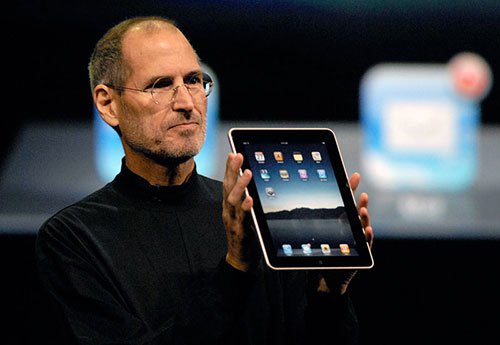
So why could the iPad be so successful while the previous tablets were almost completely failing, and what did the former CEO Steve Jobs do to help build that success? Wired has had a trip upstream to help us answer these questions.
Create the "third category of equipment" that the world needs:
Wired started with the saying: " The solution that Steve Jobs offers to deal with Android's everywhere strategy is simple and bold: he introduced the iPad ." In fact, few previously thought that Apple would announce the iPad because seven years ago, Jobs himself told the Wall Street Journal that "it turns out that users like keyboards . we looked at the tablet and thought it will fail ". But he clearly rethought this. If Google is going to win in the broadest way, Jobs wants to win the depth of the mobile market.
Andy Rubin, the head of Android at the time, had the ambition of bringing Android to as many machines as possible, just like the Bill Gates strategy did with Windows. Rubin " does not care what products will become big hits, what products are not ", as long as the total number of Android devices is growing, the Wired writes. As for Jobs and Apple's strategy, for iOS to grow in depth, every product that runs this OS is released has to be a hit, otherwise Apple will fail.
While the characters both inside and outside Apple wondered if Jobs was wrong when he closed iOS too closely, as well as what he did with the Mac, Jobs actually closed his platform even further. Starting in 2010, Wired said that Jobs had asked to use a special screw in many Apple products to make it impossible for anyone who did not own a special screw. This may sound normal, but not for Silicon Valley employees. Jobs goes against the use of available snail standards, and of course is the complete opposite of Android's hardware and software flexibility.
It is possible that many people own Android phones rather than the number of people who are using the iPhone, but those who have iPhones will probably have more iPads, iPod Touches, Macs and a few other Apple products running together on a platform . They all connect to the same online content repository, and they all make huge profits for Apple. Only high-confidence people like Jobs dare to bet on this. Jobs launched the iPad as a way to help its customers complete the final piece of the hardware-software ecosystem they have.
Just a few minutes after Jobs launched the first iPad on January 27, 2010, he made it clear to the world about the purpose of the iPad. In Jobs's presentation slide there is an image of an iPhone, a MacBook, and a question mark in the middle of the two products. He asked a brief question: " Is there room for a third category of equipment in between? " Then he said: " Some people think it will be a netbook. The problem is that netbooks are not good at They work slowly, have a low quality screen, run heavy and old PC software (which is Windows), which is no better than laptops at all. ".
According to Jobs and Apple, many people don't buy laptops to do the same things as office work such as writing, writing presentations, financial analysis with spreadsheets. They use their laptops mainly to communicate with others via email, chat, Twitter, Facebook, web browsing and reading, watching movies, listening to music, playing games. Jobs said that all of this can be done on the iPhone, but the iPhone's screen is too small to enjoy these things comfortably. You can also do it all with a laptop, but the keyboard and trackpad make the device bulky, the battery life is short, forcing you to sit close to the power outlet to charge the device.
What the world needs is a middle device capable of combining the good of both - a device " more familiar with a laptop, and having to do a lot more work than smartphones ," Jobs said. " We think we have the answer, " and the iPad image appears and fits between the iPhone and MacBook on the presentation slide.
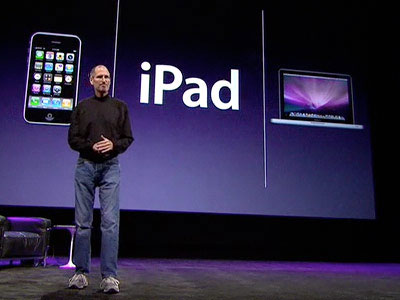
In a long-running tablet, why is the iPad more successful?
At the beginning, not many people felt attracted by the looks of the iPad. Instead, many people want to see whether the world's most talented entrepreneur, Jobs, is making a huge mistake. Tablets are one of the kind of consumer electronics devices that have been around for a long time but it has never been successful. Many people have tried to build tablets even before the PC was born. They tried many times in the murmur that tablet popularity was impossible.
Alan Kay, who worked for Xerox PARC , launched the idea of a Dynabook tablet in 1968. Apple himself created a tablet prototype called " Bashful " in 1983 but never debuted. it. The first tablet really caught the attention of consumers from Jeff Hawkins, who was behind the PalmPilot. He built the GRIDPad, a tablet that uses a pen with the same variety of computer capabilities, in 1989. By 1993, the company GO Corp. Continuing the tablet career with the EO but also did not cause any strong wave.
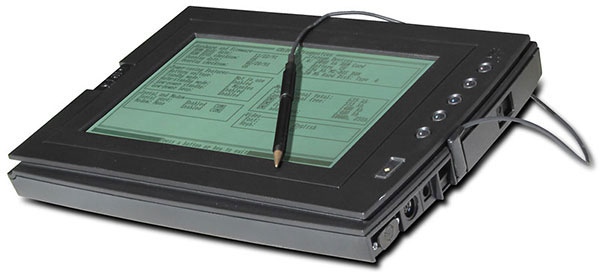
GRIDPad
By 1994, Apple launched the Newton , but unfortunately, this is an explanation for the tablet can not sell well. It was also a symbol of the era of Apple not under the leadership of Jobs, the era in which Apple was almost bankrupt with a series of failed products. In 1997, Jobs returned to his company, and one of the things he removed immediately was the Newton project. At that time, if you like something with the power of a computer but you have to be compact, please buy a laptop. All other things that serve the same purpose are too expensive.
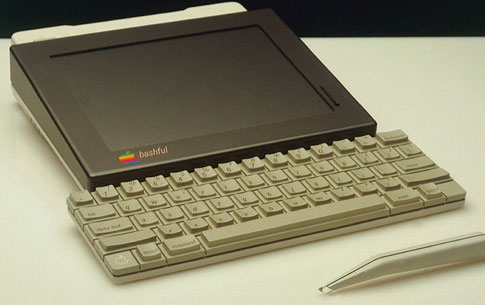
Apple Bashful
Go back to the PalmPilot, the PDA model once famous and used by many people even in Vietnam, which was successful in the late 1990s because it didn't try to do too many things. PalmPilot only serves complementary features with its own name - a small assistant device.
The most recent attempt to enter the tablet market was Bill Gates when he was CEO of Microsoft in 2002. Many Windows tablets appeared from many different companies. They are also bought by many people, but they are not popular consumers. Until 2009, the tablet was still on sale, but no device really captured the world.
All of these things make the tablet a high-risk thing, even for Jobs, in the context of Android's fierce competition with iOS. But it is also the perfect challenge for Jobs to settle. He was the one who redefined personal computers, redefining personal music players and smartphones. Now Jobs really redefined the tablet with the iPad.
It can do almost anything a laptop can do, while much lighter, battery life is almost triple. Not to mention the iPad has a touch screen like the iPhone, no need to turn off and always connect to the Internet. On the consumer side, they don't have to learn anymore because iPhones and touch-sensitive smartphones have many markets, not to mention that the iPad's software and applications are similar to the iPhone.
Technically, we can see the iPad as an iPhone. Similar hardware, similar configuration, software is similar to notes. But the difference between them is the user experience, and this difference is huge. The phone has been designed to fit in users' pockets and can be controlled by fingers.
Big things like the iPad used to require using a pen or mouse or keyboard, not with the user's finger. Series of Windows tablets in 2009 and 2010 still require using stylus to input data. At the 2010 launch, former iOS team leader Scott Forstall said, " If you see something, you just need to touch your finger. It's completely natural, you don't need to think about it. You go on but do . "
Everyone's reaction to the iPad was " oh " and " ah ". The Economist once put Jobs as a saint holding an iPad with the title " The Book of Jobs: Apple's hopes, hype and iPad . "
But why are people so skeptical at the beginning?
As the father of the Macintosh , Jobs has "more credibility " than anyone else in redefining the PC and challenging rumors around the tablet. An anonymous friend of Jobs told The Wired: " Steve hates the fact that the Macintosh does not become popular - that people are not willing to sweat to get one. So we talked a lot. How to look at people wants to have an iPad now ".

In contrast, the reaction of the early days after the iPad appeared was not particularly special, or it could be said that many people were still indifferent to it. There are many articles about the iPad without a camera, unable to run multitasking ( with iOS 3 at the time ), even stating that the iPad is the name of a product for women. There are also many people who say the iPad is like iPhone, which is four times bigger. Jobs said, " I'm not commenting on the competitor's product ," and jokingly, president Eric Schmidt, " you'll have to tell me the difference between a big phone and a tablet ." Microsoft's Bill Gates said, "I still think that the combination of real voices, pens and keyboards will become popular. The iPad is a good reading tool, but there's nothing on the iPad that I look at. enter and wish that Microsoft should do it ".
But the biggest criticism is actually what Jobs talked about in his presentation: Why do I need an iPad?
The skepticism from everyone is understandable because no one has ever seen an iPad-like device in the first, sold two months later. Users know what they need phones and laptops to do because they have been around for a long time, while tablets already on the market now are not what users want.
Even those who work with the iPad in Apple are cynical, such as former engineer Jeremy Wyld. He has contributed to developing software for iPad and iPhone. " I remember that when I first saw it, I thought it was like a stone, telling you the truth. I think 'This is very stupid' " Wyld said so, because he was also one of the the first to create the Apple Newton in the 1990s.
When Wyld looked at the iPad, all he saw was a bigger iPhone and no longer fit in your pocket. " I often find that when you do something bigger, people don't like it anymore ." But Wyld also looked at the iPad and found that this is really a new type of laptop. Making a big screen is all Apple needs to create such a new and powerful device.
The big screen is also important for Joe Hewitt, the programmer wrote the Facebook application for iPhone in 2007 and helped build the Firefox browser in 2002. One day after the iPad's launch, Hewitt wrote a My blog post is 900 to say that the iPad is the most important thing Apple has ever done. A year earlier, Hewitt was a strong objector to Apple's closed application policy, but his software development experience for various devices and platforms told Hewitt that the iPad would work out. a basic problem.
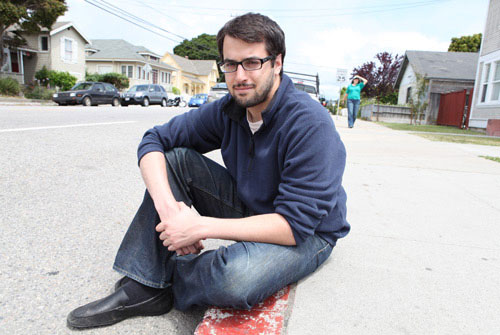
He said:
Journey into the center of the mobile device universe:
Unlike the extremely fast development of the iPhone, the iPad's journey dates back to the 2002s, according to Jobs saying Isaacson's pen when writing about his biography. The opposite happened during the Apple design iPad. The most technically difficult thing is the multi-touch screen, which is the farthest thing, while the easiest thing to think about is the design of the rest of the machine, which is seriously stuck. .
One of those who created " traction " for the development of a multitouch touchscreen is Josh Strickon. He used to make a multitouch screen in raw form for his master's thesis at the famous MIT. In 2003, Josh and Steve Hotelling and Brian Huppi ( two Apple employees ) found a way to make this technology better. The design team for this project, called the Q79 group, wants to get $ 2 million in investment from Apple
At that time, a large board of 60 x 60cm size was responsible for ordering the screen to respond to finger touch. The task of Q79 is to make these bulky items into a single chip that can fit in a mobile device. The performance of the group went well, and the group even showed how the virtual keyboard works, how the finger-opening operations will work. Finally the project was approved by Apple.
The problem is that the other hardware components of the tablet are useless. Years ago, microprocessors used in mobile devices were not strong enough to run a software that could appeal to users. The tablet also needed hard disks, which took up too much space, because high-capacity flash memory was too expensive. If all these technologies are gathered, we can only create something that is not much lighter than a laptop, not much cheaper, and the battery is not impressive. So Apple decided to abandon this project, then a few years later Jobs restored it to make the iPhone. Only when the iPhone was launched in 2007 did Jobs reconsider the tablet business.
In other words, without the iPhone, the iPad will not exist, but the iPad project is the iPhone's most original source. In 2007, if you sold a device for $ 600, it was almost impossible. ARM chips are not strong enough to run software on such a large screen. In addition, more importantly, if there is not enough content and applications, users do not know what to do with the tablet they are holding.
But by 2009 the technology was ready for tablets. Finally, the world has had chips with good bandwidth, good processing power, and people have also created long-lasting batteries to make the tablet really useful. The multitouch screen has proved extremely successful on the iPhone, so the idea of using a virtual keyboard to write email or write a web address is no stranger. Because Apple sold a lot of iPhones, the price of components also dropped to a more acceptable level.
Will the iPad be an enlarged iPhone or something completely different?
What question left Jobs to answer in 2009 is what tablet would he want to be a device? Is it an iPhone with a big screen or does it need a separate app store to separate it to make something new and completely different? Jobs was initially inclined to make the iPad a big iPhone. Jobs simply thought this was a consumer device, according to an anonymous friend. You also won't be able to edit any document or spreadsheet on it, even this friend is afraid that the iPad will turn into a device primarily for reading and browsing like the Kindle model. At the time, Jobs thought people were reading less and less, and those who liked reading were still more likely to have a paper book in hand than an ebook.
Eddy Cue, vice president of iTunes, and Phil Schiller, head of Apple's global marketing team, are two of the important people helping Jobs clarify the question. Schiller urged Jobs to correct his view of a "consumer device . " If someone sends you a document, a presentation, or a spreadsheet, iPad users need to see and edit it. Meanwhile, Cue wants to change the ebook of Jobs CEO. Amazon Kindle is in great power, readers are downloading ebooks with fast speed. Cue said in June this year that when he discussed Jobs with an ebook, Jobs said " you know, I think you're right . ". Jobs then began to think about the ideas for developing the iPad better in the direction Eddy Cue and Phil Schiller suggested.
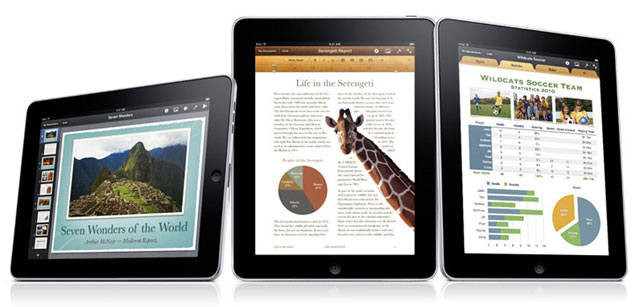
Cue said that the curvature effect when turning pages in the iBook application was Jobs's idea. The free Winnie-the-Pooh book included with iBooks was also suggested by Jobs because he thought it would show the full potential of this reading app."It has beautiful and colorful drawings, but no e-book or reading device is available ."
And the success of the iPad
When the first iPad sold in April 2010, it was clear that the world's doubts were not correct. Apple sold 450,000 iPads in its first week, 1 million units after the first month and 19 million units in the first year. It took Apple 6 months to catch up with the speed of buying customers' iPads, and in 2011 the iPad took over the best-selling electronic device of the DVD player.
Within a year of the iPad's launch, Jobs was also worried about Android's growth. In the period 2009-2010, Android kept growing rapidly, fortunately, iPhone sales also increased so fast. In 2011, Apple earned $ 33 billion, with Google and Microsoft revenue combined, and became the world's largest value company, more than Exxon oil magnate. A year earlier, the company surpassed Microsoft to become the world's largest technology company. Apple's value was then $ 100 billion and if Apple used that money to open a bank, it would become one of the ten largest banks in the world.
Notably, around mid-2011, the iPad has become an innovative device even more than iPhone and iPod. iPod and iTunes have changed the way people buy and listen to music, the iPhone changes what users expect in a modern smartphone. As for the iPad, it overturned all five industries at the same time: it changed the way people buy books, newspapers, magazines, change the way people watch movies and watch TV.
Meanwhile, Google's Android group decided to fight mercilessly any new invention of the apple. But in 2011, Google was still defeated by Apple in many ways. It is true that there are more Android users than the iPad users plus the iPhone, but the Apple devices are still better, the Apple platform is still superior and especially the number of applications optimized for Apple tablet is complete. all crushed on the Android side. Until now, Google is also putting a lot of effort into developing the real tablet version for their application.
Conclusion
Beyond all that, the iPad has once again changed the business of personal computing devices. iPads in particular and tablets in general are grabbing PC market share as well as how the PC took over the minicomputer / mainframe market share in the 1980s. As Jobs predicted, many users have used iPads as a device. third computer next to phones and laptops. Some people don't even buy laptops, and that's the iPad's success. Today the iPad's market share has decreased but it is still the popular tablet with a market share of 30% globally.
You should read it
- Steve Jobs' philosophy of life
- The iPad originates from this Steve Jobs request: A piece of glass to read emails in the toilet
- Working as an engineer for 15 years at Apple, but when it comes to demoing Steve Jobs products like this
- 10 lessons for Steve Jobs's life
- 3 stories in Steve Jobs' 'classic' speech at Stanford University
- Network Science and the mystery behind the success of Steve Jobs
- The unprecedented sayings of Steve Jobs
- Little is known about Steve Jobs' 'extraordinary' life
- Career lessons from Steve Jobs
- The memorable product presentation presentations by Steve Jobs
- Steve Jobs and eight words of 'thunder' have come true in the technology world
- Lei Jun - people call him Steve Jobs of China






 The iPad originates from this Steve Jobs request: A piece of glass to read emails in the toilet
The iPad originates from this Steve Jobs request: A piece of glass to read emails in the toilet Working as an engineer for 15 years at Apple, but when it comes to demoing Steve Jobs products like this
Working as an engineer for 15 years at Apple, but when it comes to demoing Steve Jobs products like this Steve Jobs' philosophy of life
Steve Jobs' philosophy of life 10 lessons for Steve Jobs's life
10 lessons for Steve Jobs's life Steve Jobs and eight words of 'thunder' have come true in the technology world
Steve Jobs and eight words of 'thunder' have come true in the technology world Doses like Steve Jobs can succeed
Doses like Steve Jobs can succeed